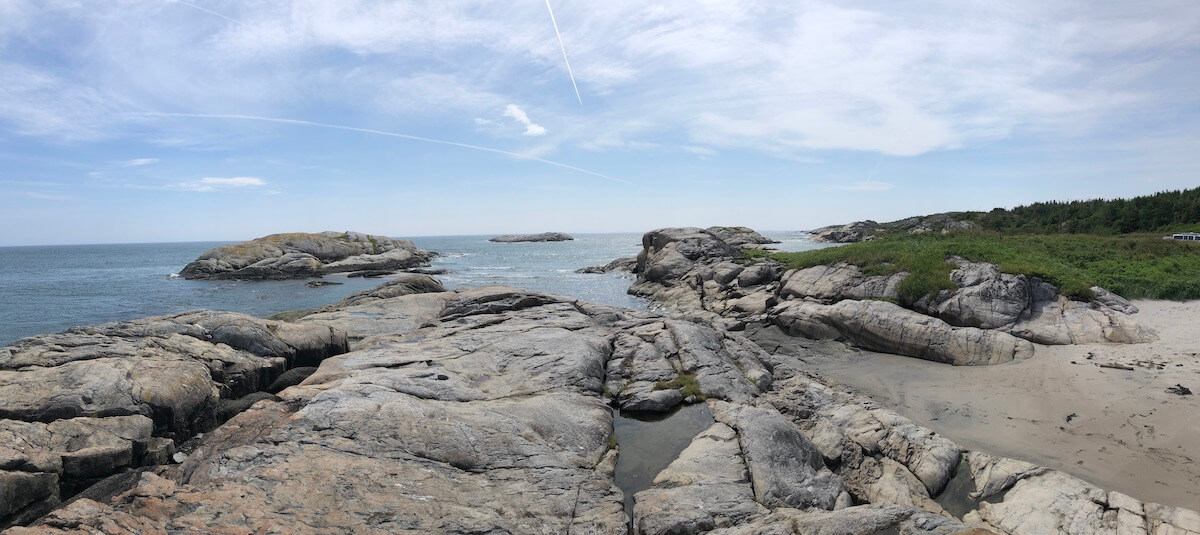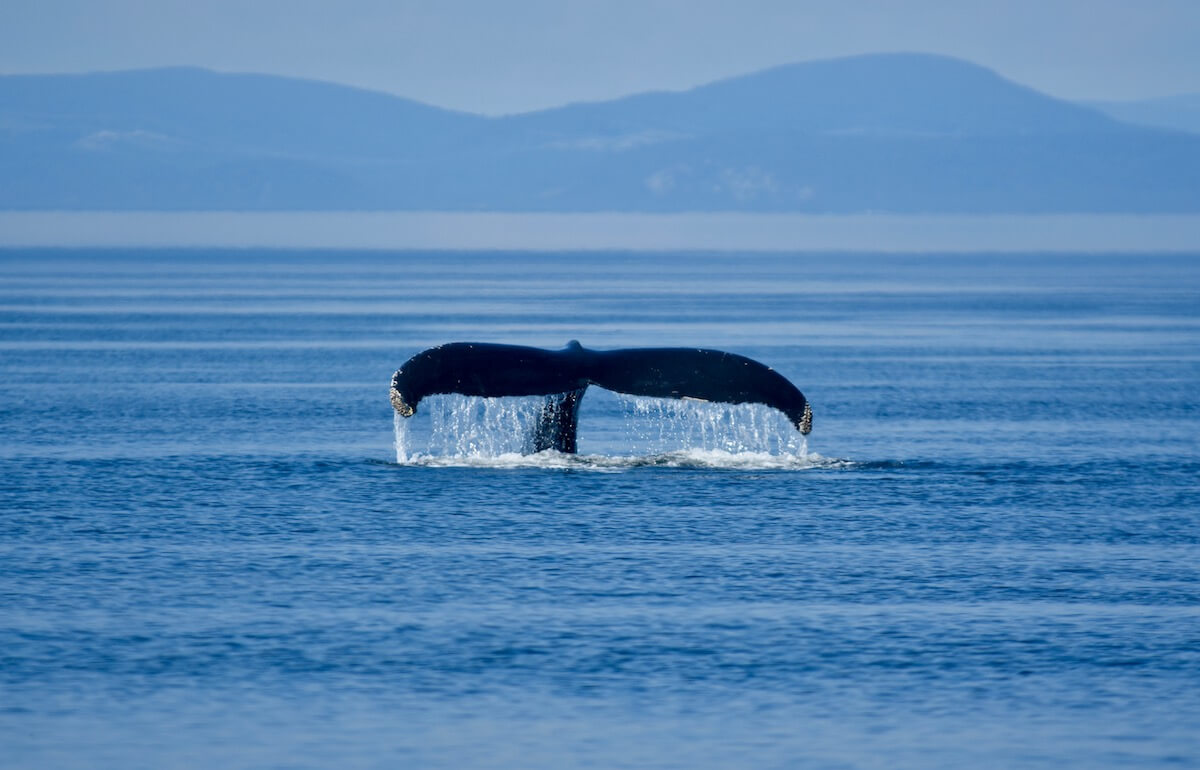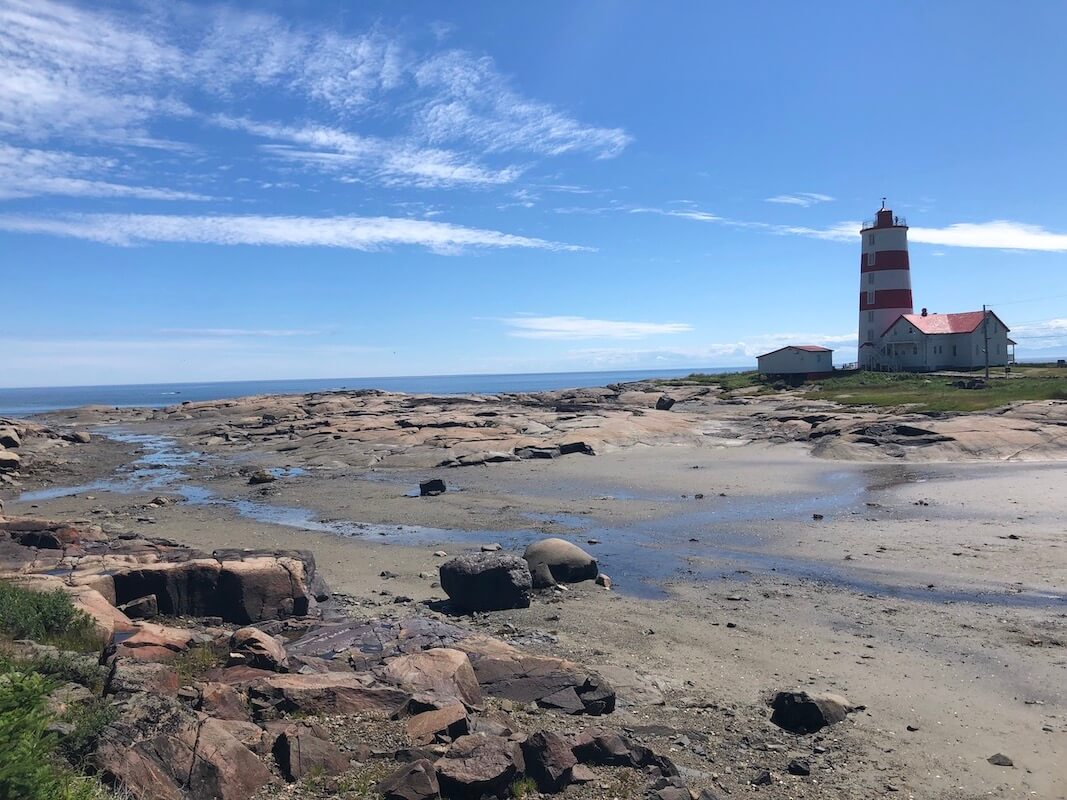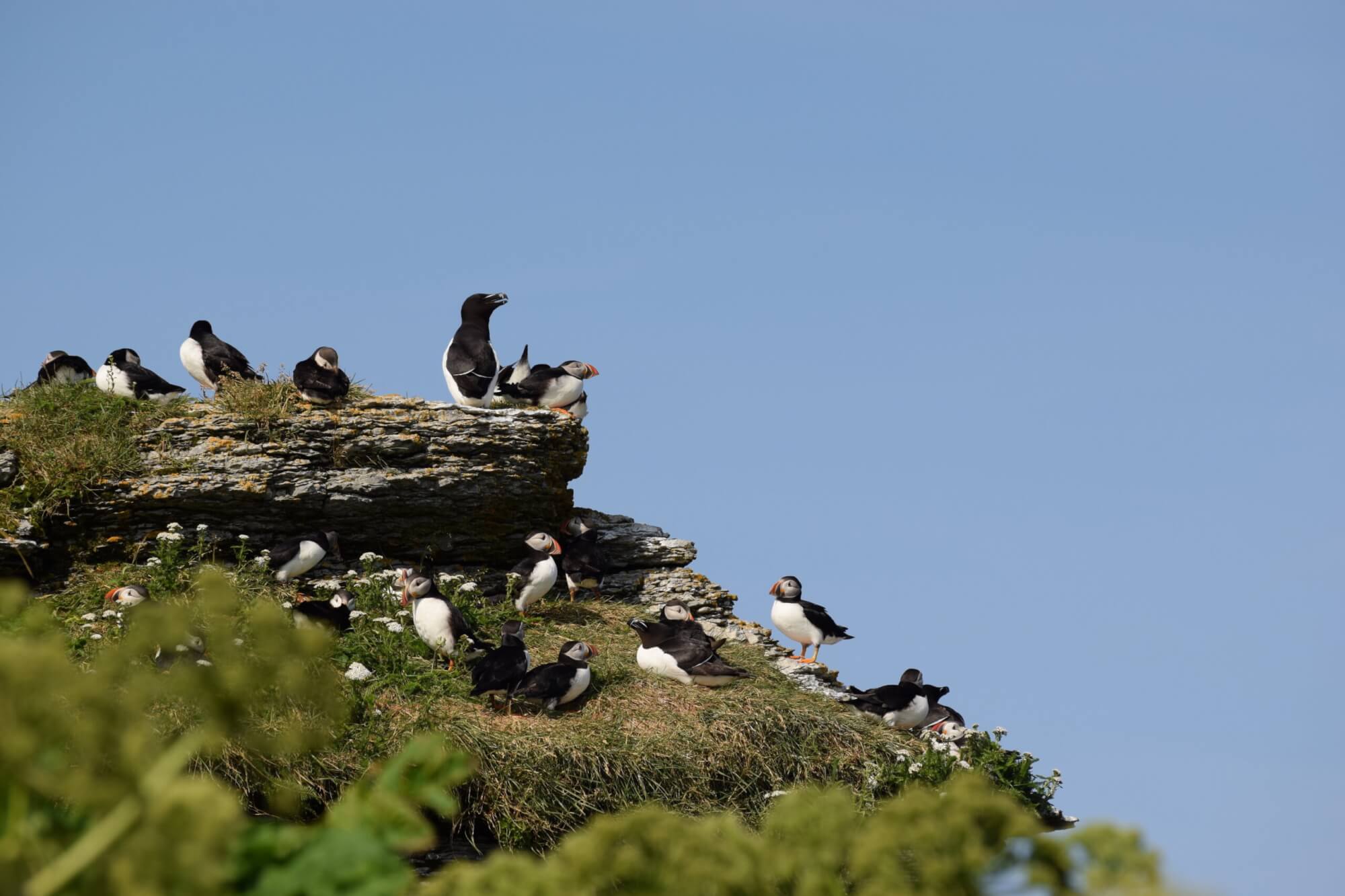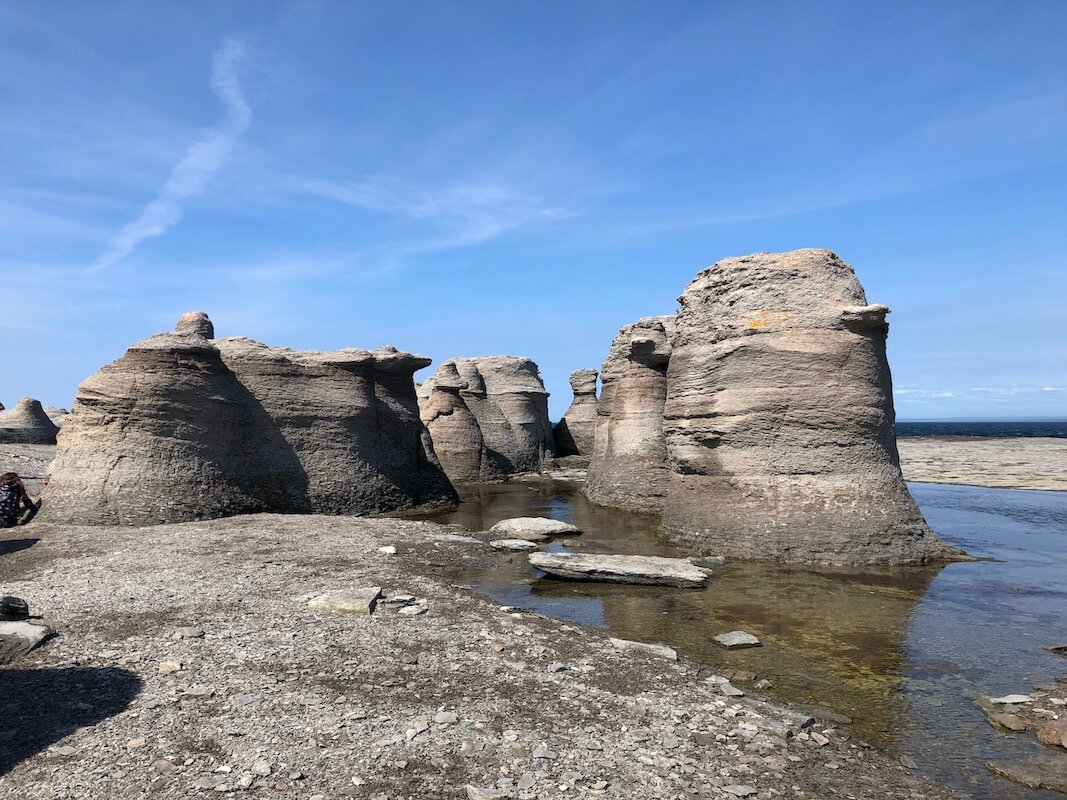Between Tadoussac and Kegaska, Route 138 hugs the coast of Quebec’s Côte-Nord region for over 850 kilometres. Dotted with magnificent viewpoints for observing marine mammals, the road is even nicknamed the “Whale Trail.” This week, one of GREMM’s naturalists and project managers is setting out on the road in search of encounters, regardless of whether they’re with fellow humans or marine mammals!
Whales and landscapes
The journey begins in Tadoussac, where minke whales and belugas are regularly spotted close to shore. Offshore, a group of five humpbacks were seen in the evening of July 27. In the days that followed, a few individuals were observed offshore and sometimes a fin whale would also surprise attentive observers. On August 3, a humpback whale even approached Tadoussac Bay. Harbour porpoises, harbour seals and grey seals complete the picture between Tadoussac and Les Escoumins.
Stops in Baie-Comeau and Franquelin provide some valuable tips: “Two humpbacks have been plying the waters between Baie-Comeau and Franquelin, but have not yet been identified,” says the marine mammal enthusiast. Indeed, she strives to identify whales in order to be able to share their stories in Whale Portraits, a weekly newsletter geared toward stakeholders in the maritime industry. Identifying the humpback whales currently lingering near Franquelin could be very interesting and help shed some light on certain questions. For example, were they seen two weeks ago in the Gaspé or in the Marine Park?
A resident of Franquelin also has a few nice observations to report: “There are a lot of minke whales right now, good numbers of porpoises and plenty of harbour seals feeding on mackerel. There are also at least 200 gannets diving off the coast of Franquelin.”
Continuing down the road, a little farther north, minke whales and harbour porpoises are seen from shore in many places, sightings made all the more spectacular by the incredible panoramas of beaches and coastline. Upon her arrival in Sept-Îles, the naturalist hears about Atlantic white-sided dolphins, which made their first appearance of the year this week. If large whales seem to be long overdue in the Mingan sector, hundreds of grey seals and myriad seabirds are being enjoyed wildlife enthusiasts. A few porpoises, minke whales and the observation of a fin whale have also been reported.
Killer whales were observed again this week (July 28), but this time near La Romaine. A fisherman also reportedly observed a group of four individuals near Petite Île au Marteau in the Mingan Archipelago National Park Reserve. After a five-day trek on the North Shore, it is time for the cetacean lover to return home, but she hopes to come back soon!
White whales
Back in Tadoussac, we get wind that belugas have traversed the waters of the Saguenay Fjord, travelling from Pointe-Noire in Baie-Sainte-Catherine past Anse de Roche in Sacré-Cœur to Baie Sainte-Marguerite, where they spend a little time.
The south shore of the St. Lawrence is not to be outdone this week, with surface feeding minke whales being regularly observed in Gaspé Bay. A few humpback whales and harbour porpoises have also been visiting this sector. Additionally, a group of 200 to 250 white-sided dolphins were observed swimming in the saline waters of Gaspé Bay. These dolphins can be recognized by the wide palette of colours they sport: black, dark blue, grey, white and even a few touches of yellow. Belugas and harbour seals have been observed in Cacouna.
In Cap-à-l’Aigle in La Malbaie, a minke whale having seemingly adopted the area has been regularly seen off the docks at high tide. A little farther west, a lone beluga is spotted near Saint-Irénée.
Ultimately, whales are present just about everywhere near the shores of the St. Lawrence, in the estuary and in the gulf, much to the delight of vacationers taking advantage of the summer sun’s rays to discover the famous “Whale Trail” and explore the magnificent coastal regions of Quebec!
Where are the Whales this week? Map of the observations of the week.
Here is the map of observations reported this week. It gives an idea of the presence of whales and does not at all represent the actual distribution of whales in the St. Lawrence. Use it for fun!
A tightly knit network of experienced observers who live according to the rhythm of the St. Lawrence throughout the year. On the waves or on shore, they scan the horizon with passion and patience, watching for the slightest spout. It is thanks to their sharp eyes and living words that we are able to write News from Afield week in and week out. A big thank you to all of our precious collaborators!
Click on the whale or the seal icon to find out more about the corresponding observation (species, number of individuals, info, pictures). To enlarge the map, click on the top right corner icon.


